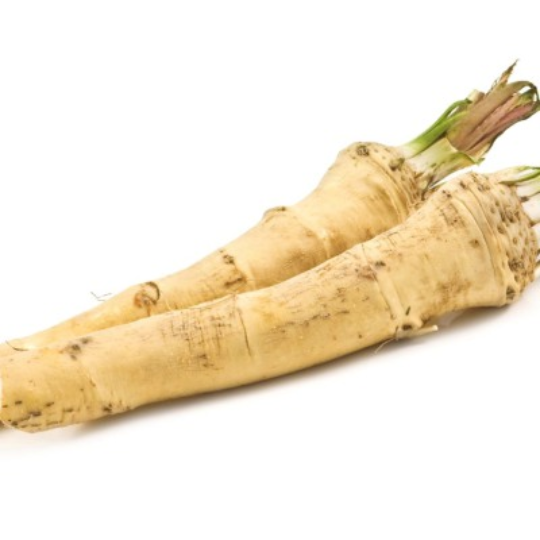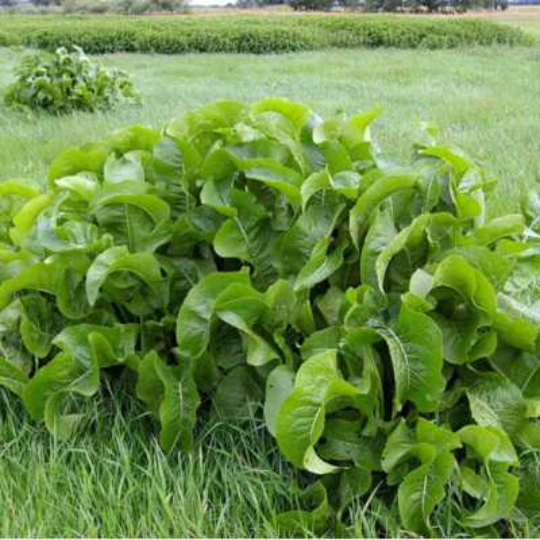Perennial horseradish (Armoracia rusticana)
** CANNOT BE SHIPPED OUTSIDE OF CANADA *****
The name of this edible perennial comes from the old French, rais fors meaning “strong root” in reference to the pungent but fine taste of its vigorous taproot. It was formerly called “poor man’s pepper”. Grated horseradish root is used as a condiment, as a substitute for mustard.
Envelope: 4 to 5 root splints (depending on size) to keep in the fridge moist until planting.
MAINTENANCE AND OTHER CONSIDERATIONS
Keep the cuttings in the fridge until planting, and make sure they stay moist. Plant the roots by laying them down, either as seeds in April, or directly in the garden at the end of May. It is better to wait until the second year of cultivation to start harvesting, then between September and April. Pull out the roots with a strong spade; there will always be a fragment left in the soil to start again in the spring.
** CANNOT BE SHIPPED OUTSIDE OF CANADA ***** The name of this edible perennial comes from the old French, rais fors meaning “strong root” in reference to the pungent but fine taste of its vigorous taproot. It was formerly called “poor man’s pepper”. Grated horseradish root is used as a condiment, as a substitute for mustard. Envelope: 4 to 5 root splints (depending on size) to keep in the fridge moist until planting. MAINTENANCE AND OTHER CONSIDERATIONS Keep the cuttings in the fridge until planting, and make sure they stay moist. Plant the roots by laying them down, either as seeds in April, or directly in the garden at the end of May. It is better to wait until the second year of cultivation to start harvesting, then between September and April. Pull out the roots with a strong spade; there will always be a fragment left in the soil to start again in the spring.
***En vente uniquement au printemps et à l'automne***
Le nom de cette vivace comestible vient de l’ancien français, rais fors signifiant « racine forte » en référence au goût piquant mais fin de sa vigoureuse racine pivotante. Elle était autrefois appelée « poivre du pauvre ». La racine de raifort râpée est utilisée en condiment, comme substitut à la moutarde.
Enveloppe: 4 à 5 éclisses (selon la taille) de racines à garder au frigo humide jusqu’à la plantation.
ENTRETIEN ET AUTRES CONSIDÉRATIONS
Gardez les boutures au frigo jusqu'à la plantation, et veillez à ce qu'elles restent humides. Plantez les racines en les couchants, soit en semis au mois d'avril, soit direct au jardin à la fin mai. Mieux vaut attendre la deuxième année de culture pour commencer les récoltes, puis ensuite entre septembre à avril. Arrachez les racines avec une bêche solide il restera toujours un fragment dans le sol pour redémarrer au printemps.
| Plant type: Perennial |
| Exposure: Half shade |
| Shape: Herbaceous |
| Soil: Fresh |
| Sowing: Directly in the garden |
| Days to maturity: 2 years |
| Germination: 7 to 10 days |
| Plant spacing: 60 cm |
| Row spacing: 70 cm |
| Depth: 10 cm |
| Width: 50 cm to 75 cm |
| Height: 1 m to 1,5 m |
| Color: Green |
| Family: Brassicaceae |





![[B-02] Apios americana (Rosary Potato) (Apios americana)](/web/image/product.product/457/image_128/%5BB-02%5D%20Apios%20americana%20%28Rosary%20Potato%29%20%28Apios%20americana%29?unique=afca737)
![[005] Carolina Garlic (Allium carolinianum)](/web/image/product.product/687/image_128/%5B005%5D%20Carolina%20Garlic%20%28Allium%20carolinianum%29?unique=9bf64af)
![[048] Chervis (Sium sisarum)](/web/image/product.product/581/image_128/%5B048%5D%20Chervis%20%28Sium%20sisarum%29?unique=afca737)
![[B-05] Japanese crosne (Stachys affinis)](/web/image/product.product/789/image_128/%5BB-05%5D%20Japanese%20crosne%20%28Stachys%20affinis%29?unique=bdcb9f3)
![[208] Spanish nutsedge (Cyperus esculentus)](/web/image/product.product/486/image_128/%5B208%5D%20Spanish%20nutsedge%20%28Cyperus%20esculentus%29?unique=b356fb4)